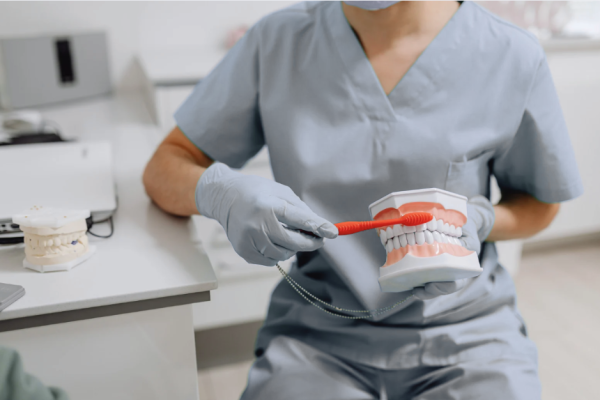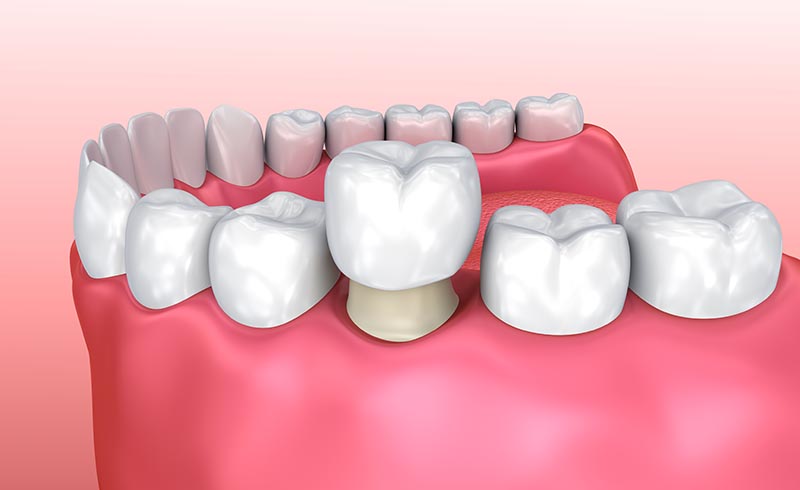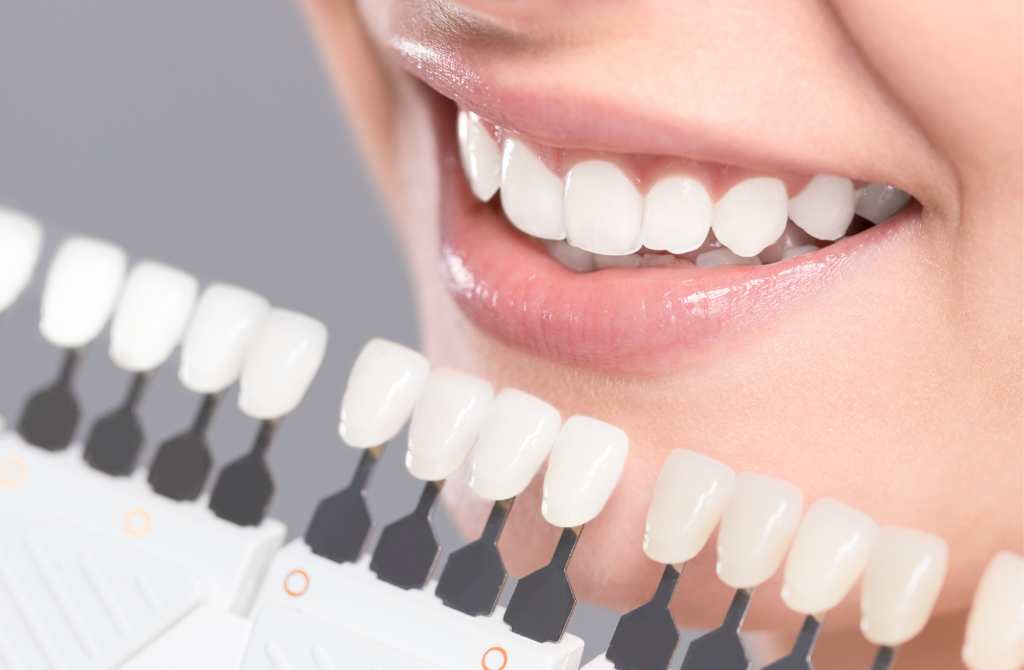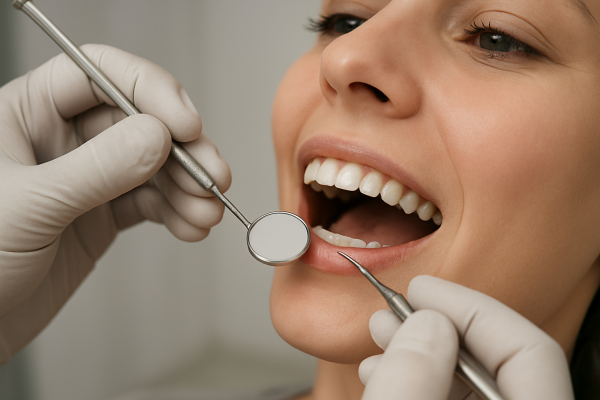
Zdrava usna šupljina temelj je lijepog osmijeha i dugotrajnog oralnog zdravlja. No, nakon kirurških i protetskih zahvata, higijena usne šupljine...
Nudimo najviši standard usluge uz kvalitetu, potpunu sigurnost i udobnost u 34 najsuvremenije opremljenih stomatoloških ordinacija.
U Poliklinici Medikadent iznimno nam je bitno u potpunosti se posvetiti svakom pacijentu i osigurati mu maksimalnu brigu u našim ordinacijama.
Multidisciplinarni tim doktora, specijalista, dentalnih asistenata i dentalnih tehničara nudi sve usluge moderne stomatologije. Primjenjujemo najsuvremeniju opremu i sve to na jednom mjestu. Vršimo sve tipove zahvata, od jednostavnih do složenih uz maksimalnu brigu o Vašem zdravlju i estetici. Tim Poliklinike Medikadent ponosi se time što je jedna od najbolje ocijenjenih stomatoloških ordinacija u Hrvatskoj i nudi najnoviju tehnologiju kako bi vam osigurao lijep, blistav i zdrav osmijeh.
Besplatan prvi pregled za naše buduće pacijente uključuje:
Kod prvog pregleda doktor radi dijagnostiku, procjenu i plan terapije.
Doktor, a potom voditelji, pacijentu predstavljaju moguće opcije.
Dogovaranje jednog ili više termina za potrebne zahvate.
Naša poliklinika nudi stručnu i ljubaznu skrb, a tim se stalno usavršava kako bi osigurao suvremene usluge i ugodno iskustvo pacijenata.
S 10 godina iskustva, naša poliklinika jamči stručnost, sigurnost i kvalitetu dentalnih usluga. Posvećeni smo pacijentima, nudeći prilagođene planove liječenja uz transparentne cijene.
Iskoristite besplatan prvi pregled s detaljnom dijagnostikom i savjetom stručnjaka. Dobit ćete jasnu, neobvezujuću ponudu i priliku za upoznavanje našeg tima.
U poliklinici jamčimo kvalitetu tretmana uz moderne tehnologije poput 3D skenera i lasera. Stručnost, transparentnost i vrhunski materijali osiguravaju sigurnost i dugotrajan rezultat.
U našoj poliklinici pružamo sve dentalne usluge na jednom mjestu – od dijagnostike do estetske stomatologije i implantologije, uz stručan i sveobuhvatan pristup.
Nalazimo se na centralnoj lokaciji s parkingom, nudimo prijevoz i smještaj za pacijente te radimo svaki radni dan cijeli dan.

Zadovoljnih pacijenata

Članova tima

Kvaliteta usluge

Ocijenili naši pacijenti

Savršeno uklopljena nadogradnja zuba od premium materijala.

Hibridno rješenje za bezubost.

Ako ste nezadovoljni s izgledom jednog ili više zubi izbjeljivanje može biti vaše rješenje.
Mnogima je stomatologija strašna i misteriozna tema. Postoje razlozi za to, a obično su iz prošlih vremena dok je bol bio glavni opis stomatologa.
Bol je sada svedena na minimum i mnogi su u čudu koliko je stomatologija napredovala i koliko je lako danas doći do zdravih zubi i lijepog osmijeha.

Zdrava usna šupljina temelj je lijepog osmijeha i dugotrajnog oralnog zdravlja. No, nakon kirurških i protetskih zahvata, higijena usne šupljine...

Obratite li pozornost na svoje zube i desni, vidjet ćete da vam oni mogu puno reći o vašoj dentalnoj higijeni...

Zdravlje naših zubi i desni nije samo izgled našeg osmijeha. Ima središnju ulogu u našem ukupnom blagostanju. Studije pokazuju da...
Svaka recenzija nam znači jer nas usmjerava da rastemo i poboljšavamo naše usluge.
Gornja i donja čeljust s novim implantatima u Medikadentu u Križvcima - rezultat? Savršenstvo! Sjajan rad, odlična cijena i tim koji je jednostavno odličan! Natalijina podrška na njemačkom jeziku bila je savršena - sastanci dobro organizirani, uvijek ljubazna i kompetentna. Pet godina jamstva na krunice? Palac gore!
I supruga je iskoristila priliku: nove plombe i čišćenje zubi - nenadmašno odlična cijena i vrhunsko iskustvo! Osjećamo se potpuno ugodno i dobro zbrinuti.
Medikadent u Križevcima? Apsolutna preporuka! Još jednom veliko hvala cijelom timu, a posebno Nataliji!
Toplo preporučujem ovu kliniku - ja sam prezadovoljna kako mi sada prirodno izgledaju zubi koje su mi napravili. Posebno pohvaljujem gđu. Marinelu koja je sve savršeno organizirala, od mog prijevoza s aerodroma, termine, smještaj... Uvijek na usluzi za sva moja pitanja. Najbitnije za sve ostale pacijente bih izdvojila: pitajte, razgovarajte, recite im sto želite jer doista možete dobiti zube točno kakve želite da budete prezadovoljni. Iskreno se nadam da će ovi moji zubi dugo trajati i da ću uživati s njima puno godina bez problema. Hvala Vam svima zajedno: i sestrama kod asistencije i mom stomatologu te svima koji stvaraju tako lijepe zube.
Moram vam zahvaliti na izvrsnom poslu koji ste obavili. Jako sam zadovoljan novim zubima i stvarno su izdržljivi i dobro izgledaju. Sada mogu bez problema jesti i smiješiti se bez oklijevanja.
Posebno se zahvaljujem g. Marku Čupiću na brizi tijekom cijelog zahvata i oporavka.
Još jednom hvala na trudeau i ljubaznosti.